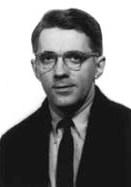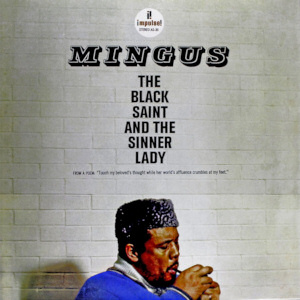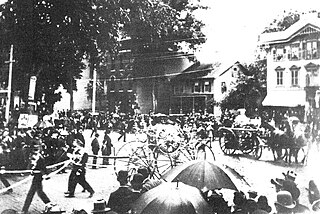
Terrence Mitchell "Terry" Riley is an American composer and performing musician best known as a pioneer of the minimalist school of composition. Influenced by jazz and Indian classical music, his work became notable for its innovative use of repetition, tape music techniques, and delay systems. His best known works are the 1964 composition In C and the 1969 LP A Rainbow in Curved Air, both considered landmarks of minimalism and important influences on experimental music, rock, and contemporary electronic music.

David Eugene Tudor was an American pianist and composer of experimental music.

Morton Feldman was an American composer. A major figure in 20th-century classical music, Feldman was a pioneer of indeterminate music, a development associated with the experimental New York School of composers also including John Cage, Christian Wolff, and Earle Brown. Feldman's works are characterized by notational innovations that he developed to create his characteristic sound: rhythms that seem to be free and floating, pitch shadings that seem softly unfocused, a generally quiet and slowly evolving music, and recurring asymmetric patterns. His later works, after 1977, also explore extremes of duration.

Christian G. Wolff is an American composer of experimental classical music and classicist.
Earle Brown was an American composer who established his own formal and notational systems. Brown was the creator of "open form," a style of musical construction that has influenced many composers since—notably the downtown New York scene of the 1980s and generations of younger composers.

The Black Saint and the Sinner Lady is a studio album by American jazz double bassist, composer, and bandleader Charles Mingus. It was recorded on January 20, 1963, and released in July of that year by Impulse! Records. The album comprises a single continuous composition—partially written as a ballet—divided into four tracks and six movements. It is widely regarded as one of the greatest jazz records of all time.
Nicolas Hodges is a pianist living in Germany.

The Real McCoy is the seventh album by jazz pianist McCoy Tyner and his first released on the Blue Note label. It was recorded on April 21, 1967 following Tyner's departure from the John Coltrane Quartet and features performances by Tyner with tenor saxophonist Joe Henderson, bassist Ron Carter and drummer Elvin Jones. Producer Alfred Lion recalls the recording session as a "pure jazz session. There is absolutely no concession to commercialism, and there's a deep, passionate love for the music embedded in each of the selections".

The Klavierstücke constitute a series of nineteen compositions by German composer Karlheinz Stockhausen.

Atmosphères is a piece for orchestra, composed by György Ligeti in 1961. It is noted for eschewing conventional melody and metre in favor of dense sound textures. After Apparitions, it was the second piece Ligeti wrote to exploit what he called a "micropolyphonic" texture. It gained further exposure after being used in Stanley Kubrick's film 2001: A Space Odyssey.
Music of Changes is a piece for solo piano by John Cage. Composed in 1951 for pianist and friend David Tudor, it is a ground-breaking piece of indeterminate music. The process of composition involved applying decisions made using the I Ching, a Chinese classic text that is commonly used as a divination system. The I Ching was applied to large charts of sounds, durations, dynamics, tempo and densities.

Piano and String Quartet is a composition by American avant-garde composer Morton Feldman. It was commissioned by the Kronos Quartet and pianist Aki Takahashi, who premiered the piece at the 7th annual New Music America Festival in Los Angeles and released a studio recording in 1993.

Dante Boon is a Dutch composer and pianist. A member of the Wandelweiser composers collective, he is perhaps best known as an interpreter of experimental piano music. His own music has been performed internationally to wide acclaim.

Five Pianos is a composition for five pianists composed in 1972 by American composer Morton Feldman. The piece is scored for five pianos and one celesta performed by the fourth pianist; the performers are also required to hum specific notes throughout the composition. It was first performed in Berlin on July 16, 1972, as part of the Berliner Musiktage festival, with the composer as one of the humming pianists.

Hallowe'en, also initially entitled Allegro vivace: Hallowe'en, is a short composition for piano quintet by American composer Charles Ives. It was probably composed in 1907 and was part of Three Outdoor Scenes, a collection of pieces that also included Central Park in the Dark.

The Gong on the Hook and Ladder or Firemen's Parade on Main Street, normally shortened as The Gong on the Hook and Ladder and also initially entitled Allegro moderato, is a short composition by American composer Charles Ives.

"Hymn: Largo cantabile", S. 84/1, sometimes also referred to as "Largo cantabile: Hymn" and often shortened as "Hymn", is a composition by American composer Charles Ives written in 1904. Grouped in the suite A Set of Three Short Pieces, it is published and commonly performed as a standalone work.

Tone Roads No. 1 is a short composition for chamber ensemble by American composer Charles Ives. It was finished in 1911.
Touches: Chorale, Eight Variations and Coda, often shortened as Touches, is a composition by American composer Leonard Bernstein. Composed in 1980, it is one of Bernstein's last compositions for solo piano.
Palimpsest is a composition for chamber ensemble by Greek-French composer Iannis Xenakis. It was composed in 1979.













